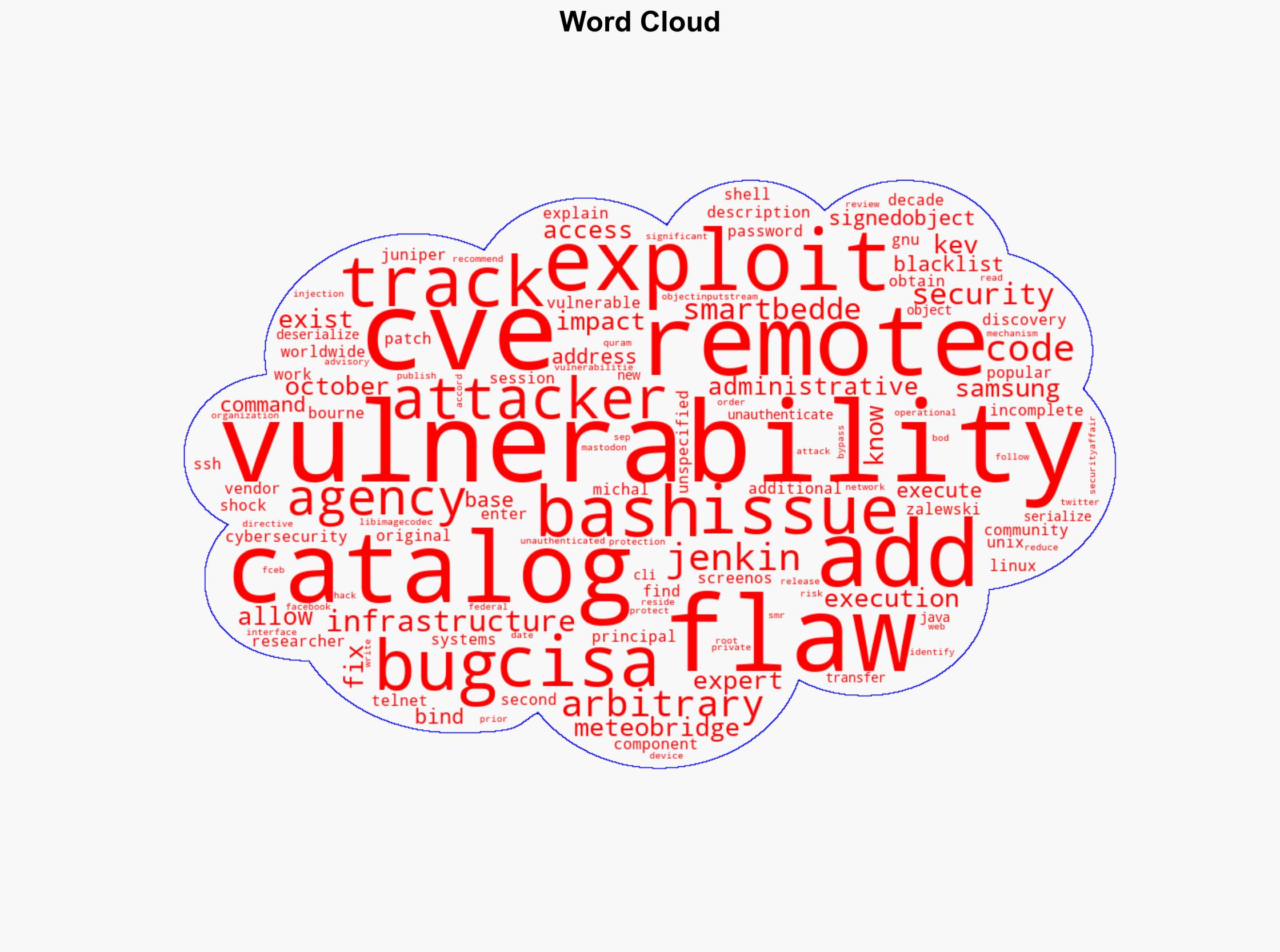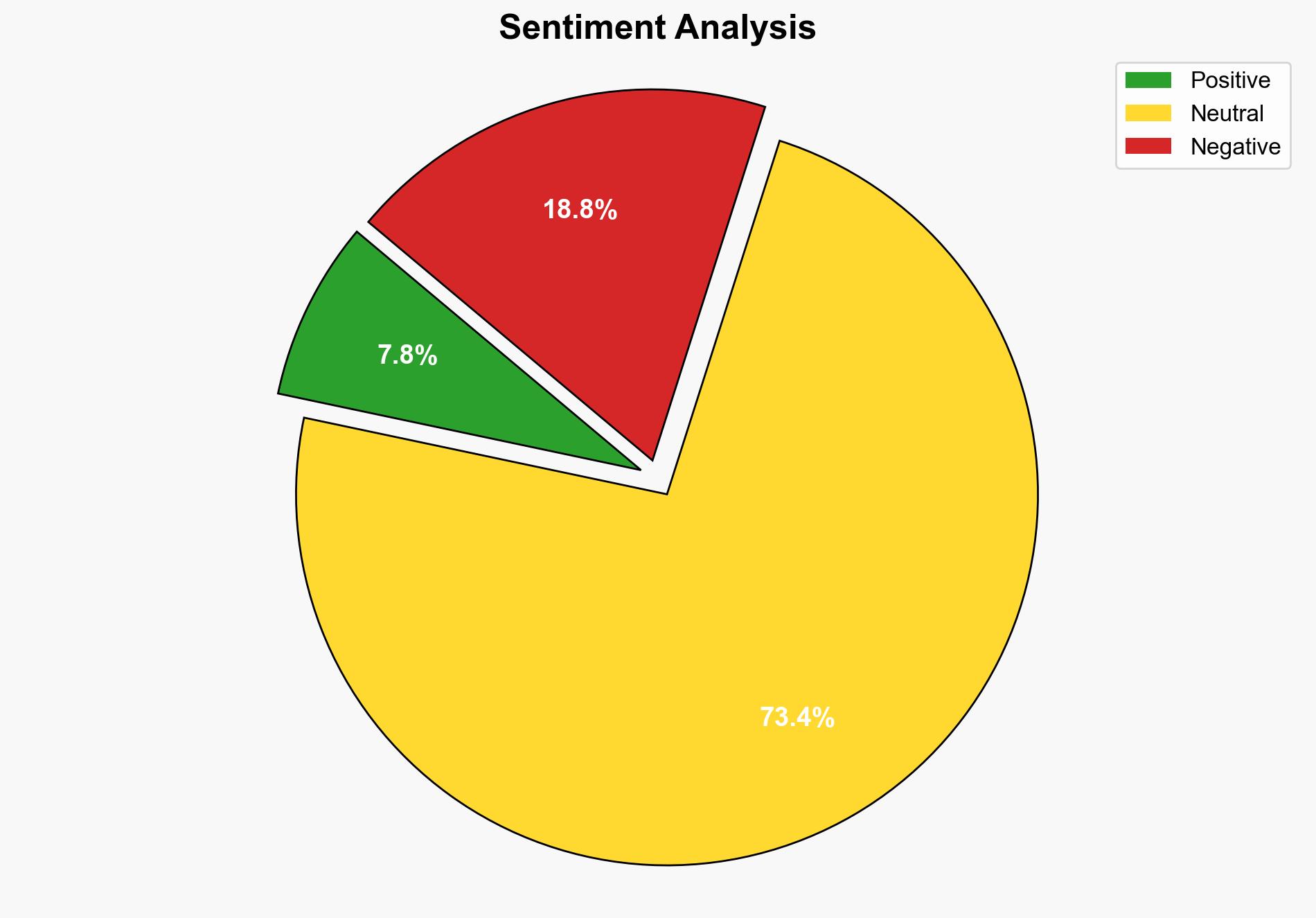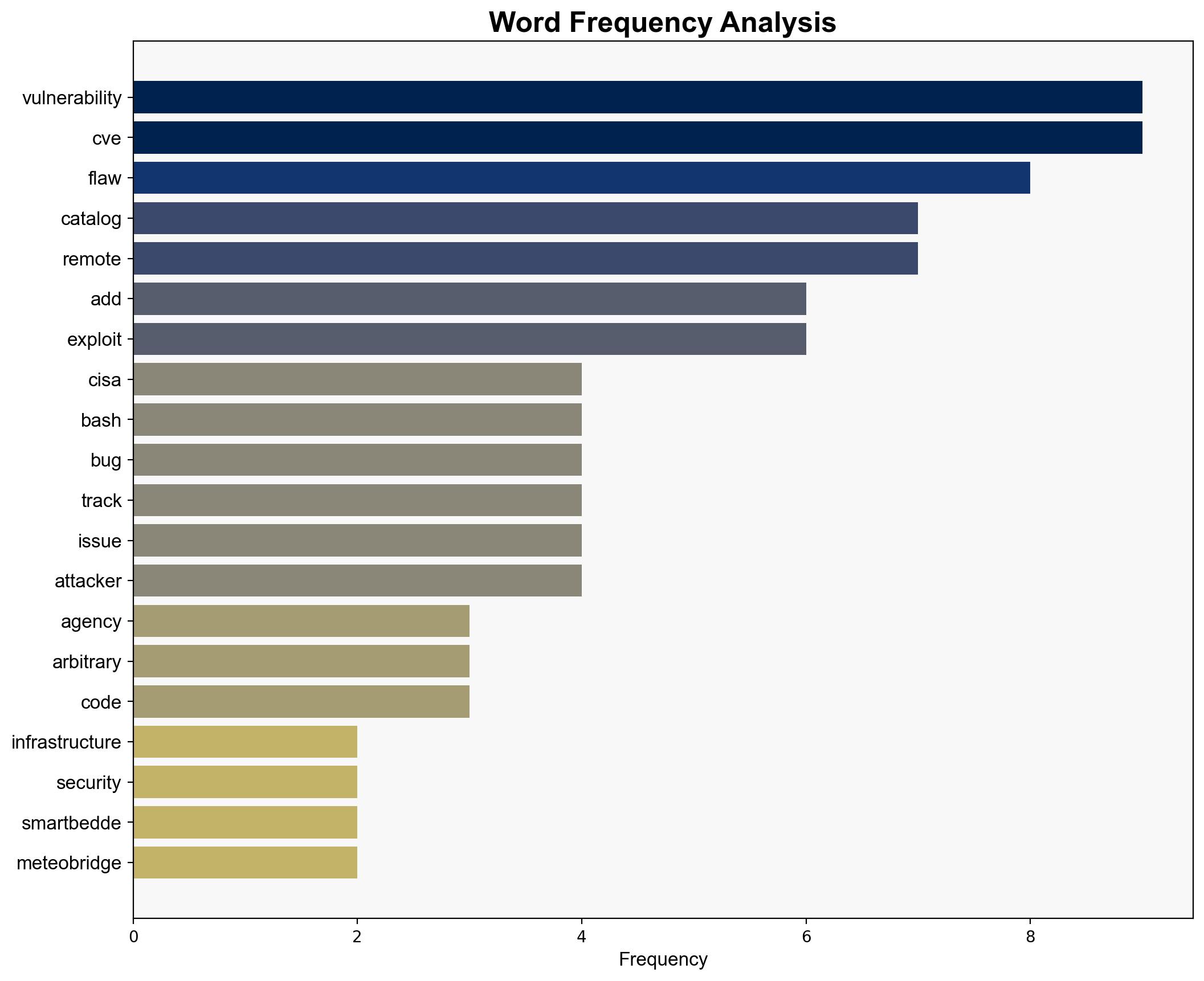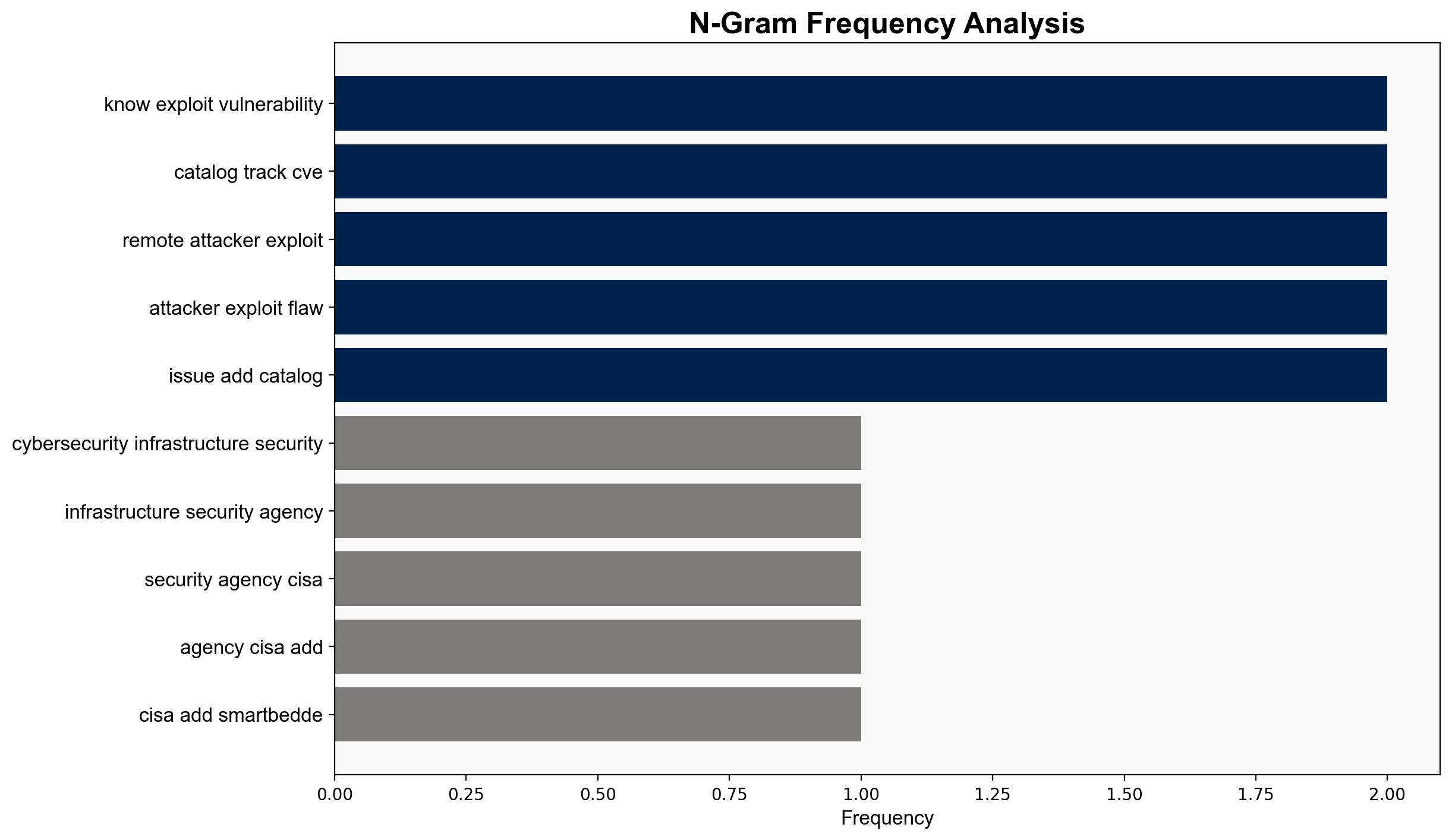US CISA adds Smartbedded Meteobridge Samsung Juniper ScreenOS Jenkins and GNU Bash flaws to its Known Exploited Vulnerabilities catalog – Securityaffairs.com
Published on: 2025-10-04
Intelligence Report: US CISA adds Smartbedded Meteobridge Samsung Juniper ScreenOS Jenkins and GNU Bash flaws to its Known Exploited Vulnerabilities catalog – Securityaffairs.com
1. BLUF (Bottom Line Up Front)
The US Cybersecurity and Infrastructure Security Agency (CISA) has expanded its Known Exploited Vulnerabilities (KEV) catalog to include several critical software flaws. The most supported hypothesis is that this expansion is a proactive measure to mitigate potential exploitation risks from these vulnerabilities, which have significant implications for both public and private sector cybersecurity. Confidence level: High. Recommended action: Immediate review and patching of affected systems by all stakeholders.
2. Competing Hypotheses
Hypothesis 1: CISA’s inclusion of these vulnerabilities in the KEV catalog is a strategic response to credible intelligence indicating imminent exploitation attempts by malicious actors.
Hypothesis 2: The addition of these vulnerabilities is a routine update based on the discovery of new technical details and does not necessarily indicate an increased threat level.
Using Analysis of Competing Hypotheses (ACH), Hypothesis 1 is better supported due to the specific mention of remote code execution and administrative access vulnerabilities, which are typically prioritized when there is an elevated threat of exploitation.
3. Key Assumptions and Red Flags
Key assumptions include the belief that CISA’s actions are based on timely and accurate intelligence. A potential red flag is the lack of specific attribution to threat actors, which could indicate either a strategic omission or a gap in intelligence. The assumption that all affected entities will act promptly to mitigate these vulnerabilities is optimistic and may not hold true universally.
4. Implications and Strategic Risks
The inclusion of these vulnerabilities highlights a persistent risk to critical infrastructure and private sector networks. Failure to address these vulnerabilities could lead to significant disruptions, data breaches, and potential geopolitical tensions if exploited by state-sponsored actors. The cascading threat includes potential economic impacts and erosion of public trust in digital infrastructure.
5. Recommendations and Outlook
- Immediate action: All organizations should prioritize patching and securing systems affected by the listed vulnerabilities.
- Best-case scenario: Swift mitigation efforts lead to minimal exploitation incidents.
- Worst-case scenario: Widespread exploitation results in significant operational disruptions and data breaches.
- Most likely scenario: A mixed response with some sectors effectively mitigating risks while others remain vulnerable.
6. Key Individuals and Entities
Michal Zalewski, a researcher who identified additional bugs in the Bash component, is a key individual mentioned. CISA is the primary entity involved in the catalog update.
7. Thematic Tags
national security threats, cybersecurity, counter-terrorism, regional focus





